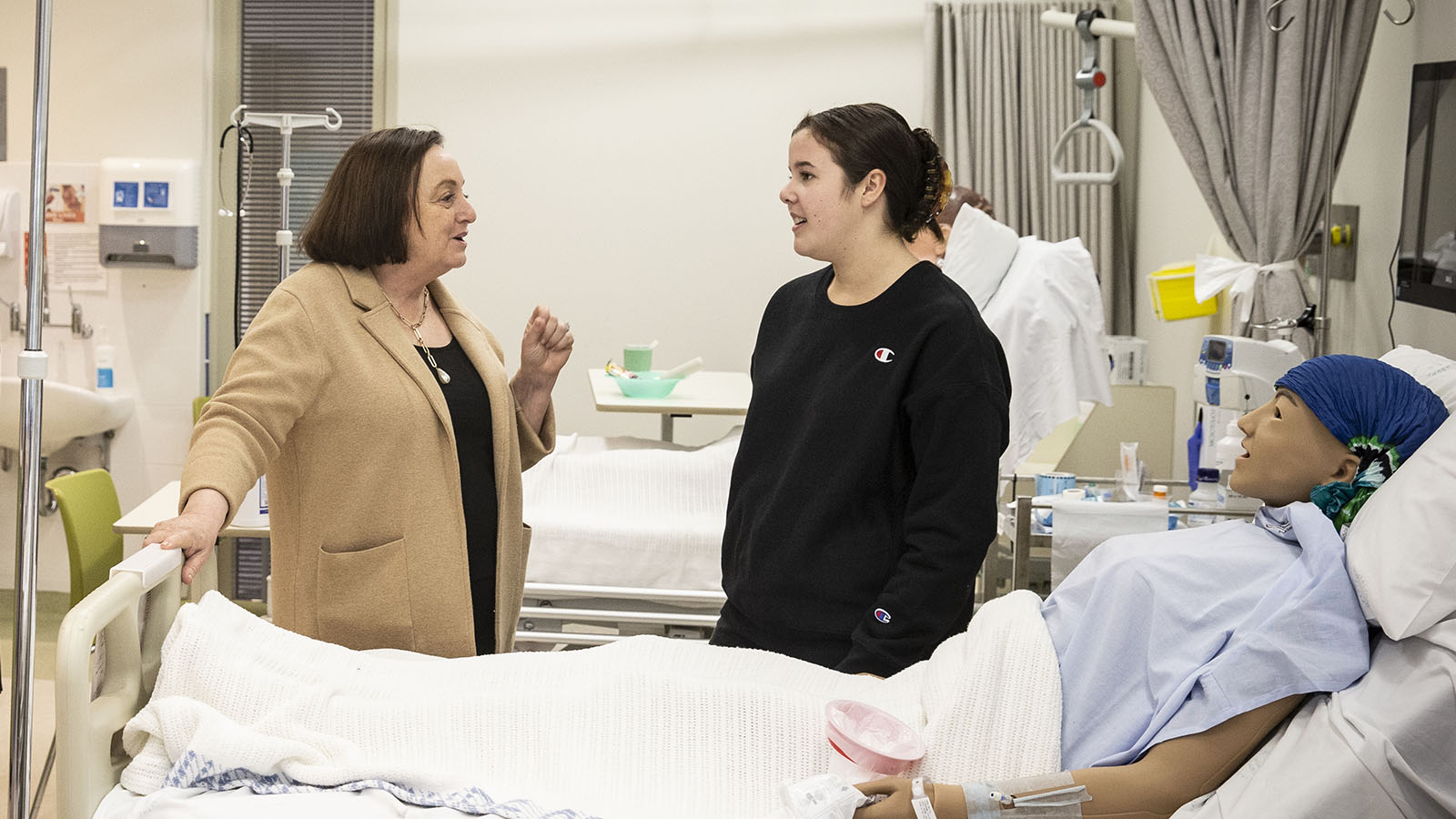March 4, 2024
UOW well placed to deliver on Accord’s equity agenda
The Australian Universities Accord Final Report aligns with UOW’s longstanding commitment to expanding access to higher education, writes Vice-Chancellor Professor Patricia Davidson
The University of Wollongong has long had a focus on driving student equity and access outcomes, to ensure that more people can access world class education close to home.
The Australian Universities Accord Final Report released last Sunday highlights the need to increase the participation and attainment in tertiary education, to ensure Australia can meet its future economic needs. The goal, at least 80 per cent of the workforce with a university or vocational education and training (VET) qualification by 2050. The rate currently sits at 60 per cent.
The key to realising that uplift it says, is a concerted effort to bring those who are not currently participating in tertiary education into the system. There is also a strong mandate to increase the interface between universities and the VET system.
That means increasing the number of people from groups historically underrepresented in higher education, such as First Nations people, people from low socio-economic status backgrounds, people with disability, and people from regional, rural and remote communities.
This is an area where UOW has an immense competitive advantage. The Accord’s emphasis on improving equity and access in higher education aligns with UOW’s longstanding commitment to expanding access to higher education, an aspiration ingrained in our DNA.
Central to our work is that we are deeply embedded in regional and rural communities and have a strong focus on our role as an anchor institution in the community, delivering enormous social and economic impact. The Graduate School of Medicine at UOW is committed to improving the health and wellbeing of people living in rural settings, by contributing to addressing the misdistribution of the medical workforce. Our campuses, particularly in the Bega Valley, Eurobodalla, Shoalhaven and Southern Highlands contribute to the social and economic fabric of communities. Walk into any hospital or school in the region you will find a UOW alumnus.
The Accord report identifies specific targets for underrepresented groups when addressing key markers of equity and access. UOW is already exceeding expectations in participation rates among First Nations people, people from low socio-economic status backgrounds and regional and remote students.
Around 40 per cent of our students come from backgrounds underrepresented in higher education and we have a history of working closely with our communities to drive increased participation and attainment among diverse groups. At the same time UOW is in the top one per cent of the QS World University Rankings 2024 and was voted 14th among the world’s best modern universities. We have formal agreements with more than 400 overseas institutions in 45 countries and there are now more than 35,000 UOW students studying across our global footprint. This tells us that inclusion and diversity does not come at the price of excellence, innovation or scale.
The University of Wollongong understands the transformative power of education and has always been passionate about fostering education for all, irrespective of background or circumstances.
UOW’s pathway programs and network of campuses in rural, regional and outer suburban locations make it well placed to deliver the Government’s objective to increase the number of students from those areas attaining a university qualification.
By delivering a world-class education close to home, our regional and outer suburban campuses play a key role in driving student equity and access outcomes, in helping people get skilled and secure work, and in supporting the economies of those communities.
UOW also endorses the Report’s finding that barriers between VET and higher education need to be broken down to ensure a more seamless and integrated tertiary education system.
We have a long and proud track record of working with TAFE NSW and industry to provide students with the skills they need to succeed in the workplaces of the future. Initiatives such as the UOW Energy Futures Skills Centre, our engineering cadets program with BlueScope, the Facility for Intelligent Fabrication and the Cyber Academy provide a blueprint for successful integration with the VET sector.
The Accord makes 47 recommendations and targets to reform higher education for the future.
I would like to acknowledge the Universities Accord Chair, Professor Mary O’Kane AC, and the expert panel for their work. This discussion is an important one, not just for the university sector, but for Australia.
A strong, sustainable and successful higher education sector is critical for the future economic and social prosperity of our nation, and we look forward to the Government’s formal response and direction following this landmark report.
This opinion piece by UOW Vice-Chancellor and President Professor Patricia Davidson was first published in the Illawarra Mercury.
